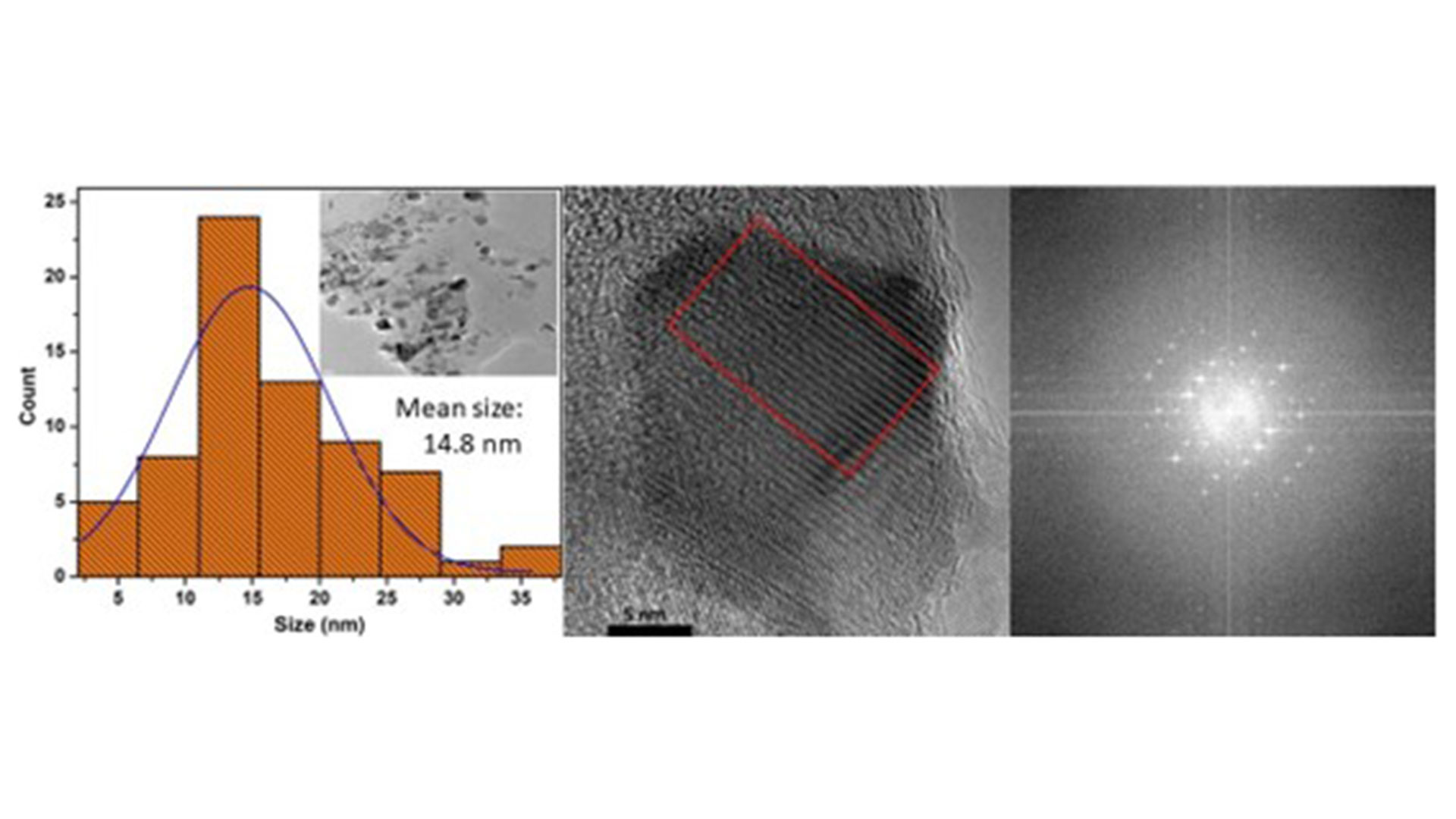Browse current research projects
Focus on nanoparticles, chemical properties and more. Explore an area of science that interests you.
Inorganic magnetic nanostructured materials
Recent group members
- Md. Delower Hossain, MS Materials Science MSU, PhD Penn State U.
- Samiul Hasan, MS Materials Science MSU, PhD U. of South Carolina
- Tamzid Ibn Minhaj, MS Materials Science MSU, currently PhD North Carolina State U.
- Nazmul Alam, MS Materials Science MSU, PhD U. Delaware
- Abdullah Al Shafe, MS Materials Science MSU, PhD North Carolina State U.
- Md. Tauhidul Islam, MS Materials Science MSU, currently PhD Case Western U.
- Zach Leuty, MS Materials Science MSU, PhD Arizona State U.
- Ashif Anwar, MS Materials Science MSU
- Mohammad Uddin, MS Materials Science MSU, currently PhD Purdue U.
- Farhan Ishrak, MS Materials Science MSU, currently PhD North Carolina State U.
Chitosan nanoparticles for drug delivery
Recent group members
- Rejeena Jha, MS Materials Science, currently PhD U. Arkansas
- Markos Georgy, currently MS Materials Science
- Hyrum Harlow, BS Physics
Insights on the dissolution of water in an albite melt from a direct structural analysis
Recent group members
- Devon Romine, MS Materials Science, currently physics instructor MSU
- Collaborator: Dr. Alan Anderson, St. Francis Xavier University, Antigonish, Nova Scotia, Canada
- Collaborator: Dr. Chris Benmore, Advanced Photon Source, Argonne National Lab, Argonne, IL
Other recent group members
- Diwash Dhakal, MS Materials Science MSU, PhD Univ. of Washington
- Nadib Akram, MS Materials Science MSU, PhD Univ. of Connecticut
Select publications (2018-2024)
Students' names appear in bold below:
X. Yuan, Z. Yang, R.A. Mayanovic, Z. Hou, Experimental evidence reveals the mobilization and mineralization processes of rare earth elements in carbonatites, Science Advances 10, eadm9118(1-14pp) (2024).
R. Jha, H. Harlow, M. Benamara, R.A. Mayanovic, On the structural and molecular properties of PEO and PEO-PPG functionalized chitosan nanoparticles for drug delivery, Bioengineering, 11, 372 (2024).
R. Jha, R.A. Mayanovic, A Review of the preparation, characterization, and applications of chitosan nanoparticles in nanomedicine, Nanomaterials 13, 1302 (2023). https://doi.org/10.3390/nano13081302.
R.A. Mayanovic, A.J. Anderson, D. Romine, C. Benmore, Insights on the dissolution of water in an albite melt at high pressures and temperatures from a direct structural analysis, Scientific Reports 13, 4012 (2023). https://doi.org/10.1038/s41598-023-31043-7.
F. Ishrak, R.A. Mayanovic, M. Benamara, Size-Dependent magnetic properties of Mn-Co-NiO based heterostructured nanoparticles, AIP Advances 13, 025209 (2023).
M.S. Uddin, R.A. Mayanovic, M. Benamara, On the synthesis and characterization of bimagnetic CoO/NiFe2O4 heterostructured nanoparticles, AIP Advances 13, 025314 (2023).
A. Al Shafe, M.D. Hossain, Mourad Benamara, V. Roddatis, R.A. Mayanovic, Defects and surface chemistry of novel pH-tunable NiO-Mn3O4±MnxNi1-xO heterostructured nanocrystals as determined using X-Ray photoemission spectroscopy, Journal of Electronic Materials, 52, 1193–1202 (2023). https://doi.org/10.1007/s11664-022-10047-5
A. Al Shafe, M.D. Hossain, R.A. Mayanovic, V. Roddatis, M. Benamara, Tuning exchange coupling in NiO-based bimagnetic hetero-structured nanocrystals, ACS Appl. Mater. Interf., 13, 24013−24023 (2021).
A. Kalintsev, A. Migdisov, C. Alcorn, J. Baker, J. Brugger, R.A. Mayanovic, N. Akram, H. Xu, H. Boukhalfa, F.Caporuscio, H. Vishvanatan, C. Jove-Colon, Y. Wang, E. Matteo, R. Roback, Uranium carbonate complexes demonstrate drastic decrease in stability at elevated temperatures, Nature’s Commun. Chem., 4, 1–8 (2021).
D. Dhakal, N. Akram, R.A. Mayanovic, H. Boukhalfa, H. Xu, A study of uranyl (VI) chloride complexes in aqueous solutions under hydrothermal conditions using Raman spectroscopy, MRS Advances, 5, 2623-2629 (2020).
D. Dhakal, R.A. Mayanovic, J.L. Baker, H. Boukhalfa, H. Xu, C.-J. Sun, Design of a containment apparatus for synchrotron XAS measurements of radioactive fluid samples under high temperatures and pressures, Rev. Sci. Instrum., 90(8), 083108 (2019).
A.J. Anderson, R.A. Mayanovic, T. Lee, The local structure of Ta(V) aqua ions in high temperature fluoride- and chloride-bearing solutions: Implications for Ta transport in granite-related postmagmatic fluids, Can. Mineral., DOI: 10.3749/canmin.1900022, 57, 843-851 (2019).
Z.B. Leuty & R.A. Mayanovic, Investigations of the magnetic perpendicular exchange bias in L10 FePt/NiO bilayer thin films, MRS Advances, 3, 2893–2898 (2018).
Samiul Hasan, R.A. Mayanovic, M. Benamara, Investigation of novel inverted NiO@NixCo1-xO core-shell nanoparticles, AIP Advances 8, 056305 (2018).
M. D. Hossain, R.A. Mayanovic, S. Dey, R. Sakidja, M. Benamara, Room-Temperature ferromagnetism in Ni(II)-chromia based core-shell nanoparticles: Experiment and first principles calculations, Phys. Chem. Chem. Phys., 20, 10396-10406 (2018).
M. D. Hossain, R. Sakidja, R.A. Mayanovic, R. Wirth, M. Benamara, Magnetic properties of core-shell nanoparticles possessing a novel Fe(II)-chromia phase: An experimental and theoretical approach, Nanoscale, 10, 2138 – 2147 (2018).




